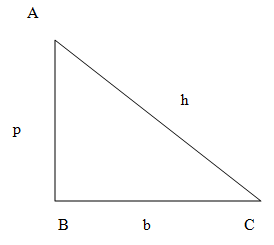Question
Question: Prove that \(\cos \left( {{\sin }^{-1}}\dfrac{3}{5}+{{\cot }^{-1}}\dfrac{3}{2} \right)=\dfrac{6}{5\s...
Prove that cos(sin−153+cot−123)=5136 $$$$
Explanation
Solution
We are going to substitute sin−153 with αand cot−123 withβ. Then we will use definitions of trigonometric ratios to determine the values required to use in the formula,
cos(α+β)=cosα.cosβ−sinα.sinβ.
Complete step by step answer:

In a right angled-triangle ΔABC we denote the perpendicular AB by p, the BC base by b and the hypotenuse AC by h.$$$$
From Pythagoras theorem,
p2+b2=h2
Let us also denote∠ACB=θ,
Then following the conventional the trigonometric definitions,
sinθ=hp,cosθ=hb,tanθ=bp,cotθ=pb
Now using Pythagoras theorem,
